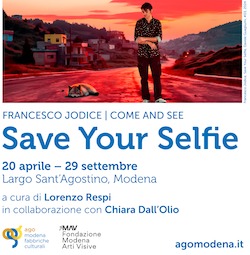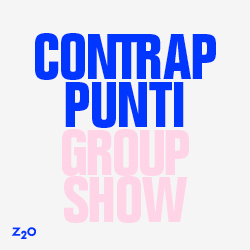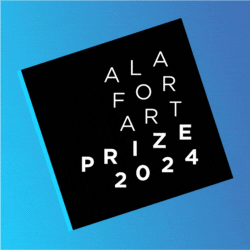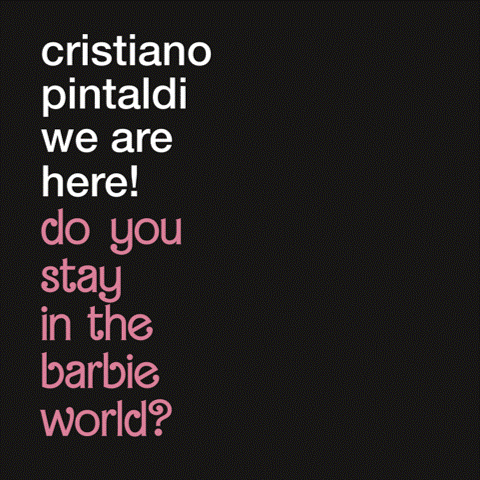[nemus_slider id=”69808″]
—
English text below
Quattordici mostre di alto livello, numerosi eventi alla presenza degli artisti, un grande fermento culturale e visivo in centro storico: questo e molto altro ha da offrire la terza edizione di Fotoindustria, biennale di fotografia contemporanea organizzata a Bologna dal MAST, fondazione privata che si conferma in fruttuoso dialogo con il patrimonio pubblico della città. FotoIndustria 2017_Mostre e Biografie
Fotoindustria 2017 si confronta con il tema “Etica ed estetica al lavoro”, declinate dal curatore François Hébel in due accezioni: da una parte l’identità che il lavoro crea, trasforma, distrugge, e che i fotografi affermano attraverso il proprio stile, dall’altra l’illusione che la fotografia può fare proprio strumento per creare realtà altre, anche rappresentando la concretezza del lavoro. Sviluppo di nuove tecnologie, recupero delle tradizioni, dignità della persona in relazione al lavoro, che diventa filtro sociale e viene registrato e restituito a chi guarda in modo ogni volta personale e particolare da ogni artista fotografo.
La mostra di Thomas Ruff, curata da Urs Stahel, presenta al MAST, attraverso diversi momenti della sua produzione in cui rivolge la sua attenzione all’industria e alle macchine, il suo essere demiurgo delle immagini, immagini che appaiono come ibridi tra diversi generici fotografici e spingono chi guarda a riflettere sulle diverse implicazioni sociali che esse portano con sé.
Josef Koudelka presenta al Museo Civico Archeologico per la prima volta dopo 15 anni le magnifiche stampe delle sue panoramiche di paesaggi industriali di tutta Europa, e non solo, in una serie di immagini magnetiche e così profonde da sembrare tridimensionali, in cui il volto della terra trasformata dall’uomo risulta potentissimo e dolente.
Lee Friedlander alla Fondazione Del Monte svela i volti e i gesti dei lavoratori americani, tra i quali molte donne, nel loro ambiente “naturale”, ritrovando espressioni concentrate, alienate, stanche, soddisfatte; mai banali, le immagini trasmettono la forza nascosta nei piccoli gesti volti a creare e produrre.
Joan Fontcuberta a Palazzo Boncompagni racconta, da curatore, un tragico episodio della folle corsa alla conquista dello spazio da parte delle autorità sovietiche; attraverso un ottimamente congegnato, e dal risultato divertente e inquietante, inganno mediatico, il fotografo catalano ci invita a riflettere sul potere che l’informazione e le immagini esercitano sulla nostra psiche.

Le immagini di Alexander Rodchenko (a cura di Olga Sviblova con François Hébel) presentate alla Fondazione Cassa di Risparmio di Bologna e provenienti dall’archivio del Museo Multimediale d’Arte di Mosca mostrano la consueta intelligenza, eleganza e forza innovativa del grande maestro russo, che entra con leggerezza nella quotidianità di lavoratori di vari settori, suggerendo prospettive originali di oggetti e processi produttivi e aprendo uno squarcio inedito su un tipo di attività “differente” come quella dei lavori forzati dell’epoca comunista.
Mimmo Jodice, in una veste non conosciuta ai più, presenta a Santa Maria della Vita gli scatti degli anni militanti, dedicati alle grande proteste degli anni ’70 e alla denuncia del lavoro minorile in una Napoli dai forti contrasti. Divulgative e pungenti, queste fotografie, pubblicate su diverse riviste, hanno contribuito all’emersione di problematiche che affliggevano la società e che, in parte anche grazie al suo impegno, sono state superate.
Dalle ricerche della tedesca The Walther Collection (mostra curata da Arthur Walther, Brian Wallis e François Hébel) parte l’esposizione delle due raccolte parallele esposte alla Pinacoteca Nazionale, entrambe incentrate sul tema della produzione di energia e il suo impatto sull’ambiente e la società; da una parte le immagini di un fotografo anonimo che documentò la creazione di Lynch, cittadina creata in funzione dell’apertura, all’inizio del Novecento, di una miniera di carbone nel Kentucky più profondo, dall’altra le immagini di Mitch Epstein, che ritrae le centrali elettriche, le raffinerie e i pozzi petroliferi in contesti bucolici o completamente assorbiti dal tessuto urbano, in una pericolosa e tesa convivenza di attività umane difficilmente conciliabili.
John Myers al Museo iInternazionale e Biblioteca della Musica riflette sulle conseguenze della deindustrializzazione in un’Inghilterra piegata dalle riforme dell’era Thatcher, dove interi paesi si ritrovarono senza un lavoro e un posto nella società, pur non perdendo mai il caratteristico attaccamento alle figure di riferimento e la naturale compostezza, da ritrovare anche nelle fotografie.
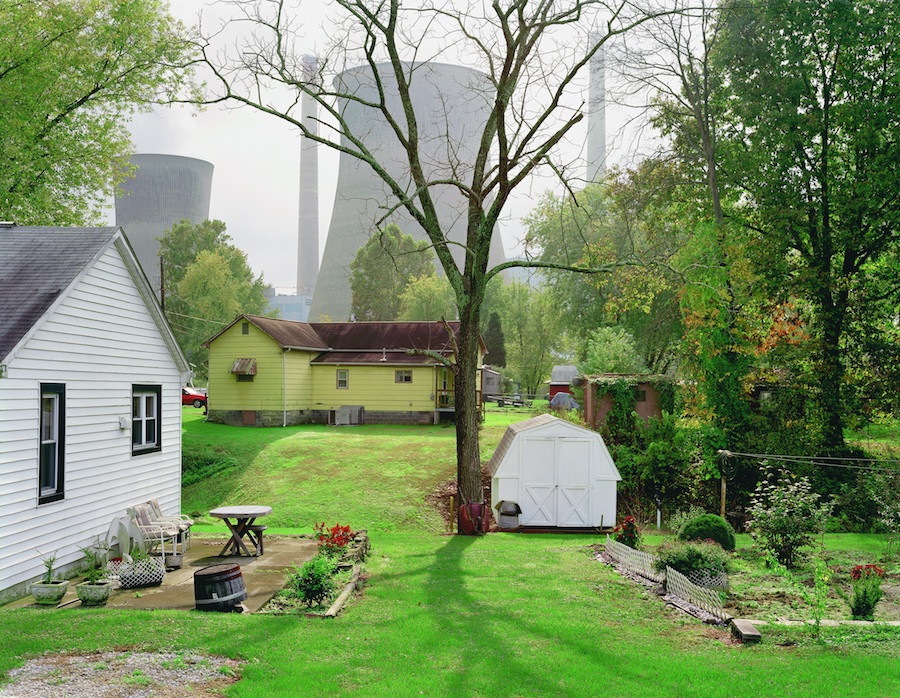
Una riflessione comune al giovane Michele Borzoni a Palazzo Pepoli Campogrande che documenta il lavoro in Italia dopo la crisi del 2008; fabbriche in fallimento vendute all’asta, centri direzionali e logistici alienanti e vuoti, produzioni straniere dalle condizioni lavorative e di vita proibitive, massiccia ricerca di un posto di lavoro sicuro attraverso i concorsi pubblici, i precari per eccellenza nei call center, le proteste sindacali. Prospettive disturbanti e purtroppo comuni.
Mårten Lange al Teatro San Leonardo ritrae attraverso architetture e macchinari la complessità del lavoro e del rapporto tra l’uomo e il suo ambiente d’attività, piccole giungle tecnologiche e solitari spazi aperti, in un impeccabile stile pulito e nitido, pur attento al dettaglio e all’inconsueto come ingrediente d’interesse visivo.
Vincent Fournier al Mambo rappresenta in due diverse serie fotografiche due industrie tecnologiche e apparentemente poco “umane” come quella spaziale e quella della robotica umanoide; due sfere in cui umano e non si intrecciano e si confondono, in giochi prospettici avvincenti e colori extraterrestri vividi e vivaci che mescolano ancor di più illusione e realtà.
Carlo Valsecchi all’ex Ospedale dei Bastardini crea una mostra in forte dialogo con lo spazio espositivo (a cura di Urs Stahel); da una parte i muri scrostati del vecchio edificio barocco e dall’altra immagini oniriche di impianti industriali ipertecnologici così precise e taglienti da sembrare astratte, fotografie che paiono disegni tecnici, dove il colore diventa elemento spaziale e i volumi si trasformano.
Anche Mathieu Bernard-Reymond allo Spazio Carbonesi gioca sull’effetto realtà-illusione, in questo caso attraverso la rielaborazione digitale; partendo da immagini di centrali di produzione elettrica francesi l’artista estrapola dati e motivi con cui creare nuovi brani di spazio visivo, astratti e poetici, da ripensare e interpretare.
Yukichi Watabe al Museo di Palazzo Poggi interpreta il lavoro di un investigatore di polizia giapponese come fosse un attore di un noir americano; le immagini, che sembrano fotografie di scena, colpiscono per la forza e il taglio documentaristico, in una Tokyo del dopoguerra inedita, decisamente diversa dall’immagine ricca e tecnologica di oggi.
Un’occasione da non perdere, quella di Fotoindustria 2017, per godere di mostre di alto livello su un tema molto attuale e importante, visitare luoghi a volte difficilmente accessibili e apprezzare il fermento culturale di una città sempre più aperta al contemporaneo. Le mostre sono a ingresso gratuito previa registrazione, e gli eventi (conferenze, tavole rotonde, visite guidate, letture, performance, workshop per bambini) su prenotazione. Fotoindustria 2017 si concluderà il 19 novembre.
Nello stesso giorno di apertura di Fotoindustria è stata inaugurata anche una nuova opera permanente commissionata dal MAST e posizionata sulla rampa d’accesso al complesso, REACH di Anish Kapoor, e la sua mostra Places of origin – Monuments for the 21st century, che raccoglie molti modellini dei progetti di arte pubblica più famosi dell’artista. REACH, un grande arco in acciaio specchiante che crea un ponte tra lo spazio espositivo e la comunità che lo abita, è un’opera non descrittiva ma coinvolgente, che invita il visitatore a entrare fisicamente in relazione con essa, trasformando un’opera di arte pubblica da monumento a oggetto di relazione. La perfetta tecnica di realizzazione rende la scala dell’opera vivibile e il materiale fa scomparire il lavoro nell’ambiente circostante; cosa che succede anche a chi entra nell’opera, in modo semplice e spettacolare, rendendo REACH un punto focale per l’interesse di chi varca i cancelli della fondazione.

Foto/Industria 2017 | MAST, Bologna —
Fourteen high-level exhibitions, numerous events with artists participation, a rich visual and cultural excitement all through the historic centre: these and many more are the ingredients of the third edition of Fotoindustria, contemporary photography biennial organized in Bologna by MAST, a private foundation which fruitful dialogue with the public heritage of the city can be confirmed once again.
Fotoindustria 2017 has as its main topic “Ethic and Aesthetic at work”, that the curator François Hébel translated into two senses: on the one hand identity that work creates, transforms, destroys and that the photographers affirm through their style, on the other hand illusion, that photography can embrace and use as a tool to create different realities, representing the concreteness of work as well. The development of new technologies, traditions enhancement, people dignity in relation to work, that becomes social filter and is registered and rendered to the audience always differently and very personally by each photographer artist.
Thomas Ruff’s exhibition, curated by Urs Stahel, presents at MAST – through different moments of his production where he focused his attention on industry and machines – his nature of image demiurge, with pictures looking like hybrids among different photographic genres, inviting who is watching them to think of the different social entailments they bear.
Josef Koudelka displays at Museo Civico Archeologico, for the first time after 15 years, the spectacular prints of his industrial landscapes panoramas from all over Europe and the world, in a series of magnetic and extremely deep images, so deep to look three-dimensional, where the facet of the Earth, transformed by humans, shines powerful and sore.
Lee Friedlander at Fondazione Del Monte unveils faces and gestures of American workers, among them many women, in their “natural” surrounding, picturing concentrated, alienated, tired, satisfied expressions; never ordinary, his images transmit the force hidden in small gestures aimed at creation and production.
Joan Fontcuberta at Palazzo Boncompagni narrates, as curator, a dramatic episode of Soviet authorities’ fool run to space conquest; through an excellently devised media deceit, which result is funny and disturbing at the same time, the Catalan photographer invites the audience to think about the power information and images exert on our psyche.

Alexander Rodchenko’s images (exhibition curated by Olga Sviblova with François Hébel) presented at Fondazione Cassa di Risparmio di Bologna, coming from the archives of Multimedia Museum Moscow, show the usual intelligence, elegance and narrative force of this great Russian master, who entered lightly inside different industries workers’ life, suggesting original perspectives on objects and production processes and opening an unprecedented visual burst into a “different” activity like hard labor of the communist era.
Mimmo Jodice, in a role not everyone knows of him, presents at Santa Maria della Vita the shots of his militant years, dedicated to the 70s big protests and to the condemnation of child labour in a highly contrasted Naples. Educational and biting, these pictures, published on different magazines, did contribute to the emergence of problems troubling society and that, also thanks to his commitment, have been overcome.
From the research of the German The Walther Collection (show curated by Arthur Walther, Brian Wallis and François Hébel) starts the exhibition of the two parallel series displayed at Pinacoteca Nazionale, both focused on energy production and its impact on environment and society. As a first step, images of an unknown photographer who documented the birth of Lynch, a small city built as a function of the opening of a coal mine at the beginning of XX century in Kentucky; beside, Mitch Epstein’s pictures, portraying electric plants, refineries and oil wells inside bucolic contexts or completely absorbed by urban fabric, in a dangerous and tense cohabitation of scarcely reconcilable human activities.
John Myers at Museo Internazionale e Biblioteca della Musica reflects on the consequences of deindustrialization in a bow down by the reforms of Thatcher’s era England, where entire villages found themselves jobless and lost their place inside society, anyhow without losing their characteristic bond to their leading figures and the natural composure, to be found also in the photographic style.

A common consideration also to young Michele Borzoni, at Palazzo Pepoli Campogrande, who documents Italian job crisis after 2008; bankruptcy firms sold at auctions, directional and logistic centers, alienating and void, foreign productions where the working and living conditions are impossible, massive search for a sure job through public exams, occasional workers inside call centers, union protests. Disturbing and unfortunately common perspectives.
Mårten Lange at Teatro San Leonardo portrays, through architectures and machines, the complexity of work and the relationship between people and their activity environment. Small technological jungles and lonesome open spaces, depicted in a flawless neat and clean style, but attentive to unusual detail as visual interest element as well.
Vincent Fournier at Mambo depicts in two different photo series two technological industries normally looking “non-human” such as space research and humanoid robotics; two spheres where human and non-human intertwine and blur, also through compelling perspective plays and alien, intense and bright colors that mix up even more reality with illusion.
Carlo Valsecchi at former Ospedale dei Bastardini creates a show with a strong bond with the exhibition space (curated by Urs Stahel); the flaked walls of the baroque building are opposed to the dreamlike images of hyper-technological industry plants, so much precise and sharp to even look abstract, photographies that look like technical drawings, where color becomes spatial element and volumes transform.
Mathieu Bernard-Reymond at Spazio Carbonesi plays with the effect reality-illusion as well, in this case through digital re-elaboration; starting from images of French electric power plants, the artist extracts data and motifs with which he creates new fragments of visual space, abstract and poetic, to rethink and interpret.
Yukichi Watabe at Museo di Palazzo Poggi follows the workdays of a Japanese police officer just like he was an actor of an American noir movie; the images, that look like set photographies, strike the audience for their force and documentary angle, in a postwar Tokyo looking very different from today’s technological and rich image of the city.
An occasion not to be lost, this one of Fotoindustria 2017, to enjoy high-level exhibitions on a very important and actual topic, visit palaces and villas in some cases normally not open to the public, and cherish the cultural energy of a city always more open to contemporary creativity.
The entry to the exhibition is free upon registration and the events (conferences, round tables, guided visits, lectures, performances, kids workshops) are free upon booking. Fotoindustria 2017 will be on view until November 19th.
On the same day of Fotoindustria opening, a new permanent work commissioned by MAST and positioned on the complex entrance ramp was also launched: REACH by Anish Kapoor, with his new show Places of origin – Monuments for the 21st century, collecting the models of his most famous public art projects. REACH, a wide mirrored iron arch creating a bridge between the exhibition space and the community of people living it, is not a descriptive work but an engaging one, inviting the visitor to physically enter in a relationship with it, transforming a public art work in a relationship object. The perfect realization technique makes the scale livable and the material makes the work disappear in the surrounding environment; something that can also be experienced by who enters the work, simply but spectacularly, making REACH a focal point for the interest of who crosses the gates of the foundation.







